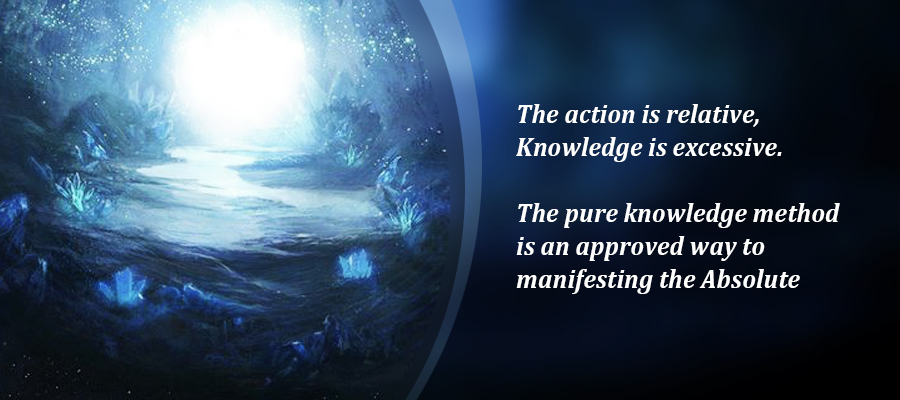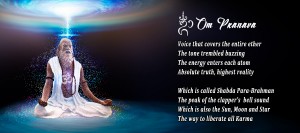Rejection and Affirmation
The triple process of the realization of the Truth above is carried out through the method of rejection and affirmation. Denial is a forced negation of the microcosmic and macrocosmic objectivity, transcendence of a shallow phenomenal cloak; from the realm of physical, vital, mental, intellectual, and conscious existence, which, both individually and cosmically, are gross, subtle and causal manifestations that differ in their intensity of objectivity. All of this is rejected as “Not this, not this”, because, what is Real is not what is seen and what seems to create a difference in existence.
God is the cosmic integration of the physical, subtle and causal world, while humans are the disintegration of individuals into the physical body, subtle body and causal body. Therefore, both the individual and Ishvara are phenomenal beings, although Ishvara is for the most part more real than the individual. However, all objective beings, whether individual or cosmic, must be rejected through the power of integrated thinking that moves towards the oneness of existence.
Taittiriya Upanishad (II. 8; II. 2-6) explains this method of self-transcendence, where the five layers of objective consciousness are crossed with Absolute experience. Each internal layer is finer and broader than the external ones and pervades them as themselves. Therefore, when, through the method of negative affirmation assisted by faith and reason, all the veil of external consciousness is trampled, the deepest true Self (Jiva) and Brahman which includes transcending all this as a single Being is realized. Here, the body and the world are simultaneously negated in all levels of manifestation, and thus Reality is experienced in its Nature.
The affirmative method is a direct effort to identify yourself with the Absolute. It starts with conformity with every creature in the universe and then continues with the ideas of eternity, infinity, eternity, eternity, completeness, independence and wholeness.
This is a method that is far bolder than the negative, because positivity is always a reality that is more difficult than negative, more difficult to deal with, and so it takes courage, perseverance, patience, persistence, and greater will is needed here.
“I am the Absolute and all of this is the Absolute“, are two positive forms of Reality’s statement. These are the two stages of the whole experience. The latter replaces the first, the first relates to oneself, the individual, and the last is convincing certainty. The first arises in relation to the subjective body, while the second arises with reference to the entire universe.
At first, there was the “I Am Reality” experience, and then the greater experience “All is Reality, I Am All, Reality itself.” “Aham brahma asmi” and “sarvam khalu idam brahma” are affirmative processes of Self-Integration, in which even unlimited psychosis (brahma-karavritti) that is produced through the first experience is dissolved in the Pure Consciousness that is obtained through the second experience.
This is a kind of attempt to immerse oneself in Absolute-Awareness while simultaneously stopping all foreign dualistic thinking (vijatiyavrittinirodha) and allowing essential unifying consciousness to assert itself fully (sajatiyavrittipravaha). The mind will be buried in absoluteness, consciously leaving aside the ideas of all duality.
Individual efforts stop at the experience of unlimited psychosis because this is the beginning of the dissolution of the individual’s consciousness of separateness in the consciousness of infinite completeness. Beyond this infinite level of consciousness, it can only function from the Power of Truth from Absolute Unity which causes changes in experience; otherwise, transformation without such effort cannot be explained. Efforts made during objective integration or integration of the visible universe are influenced, but Absolute integration in which the personality or individual itself is swallowed into the infinite cannot be the effect of any effort on the part of the individual.
The idea of a sea of light, power, wisdom, happiness, peace, unconditional abundance, and unlimited satisfaction are positive assertions.
There are many sentences in the Upanishads which suggest this truth-realization process. The mind manifests itself through strong affirmations, and the higher and broader state of consciousness experienced through the affirmation of the super-individualistic Truth helps in opening up the immediate circumstances outside of it, and thus the Absolute Perfection is attained and finally realized. This is the method of brahma-bhyasa or brahma-bhavana which brings immediate liberation here and now.





